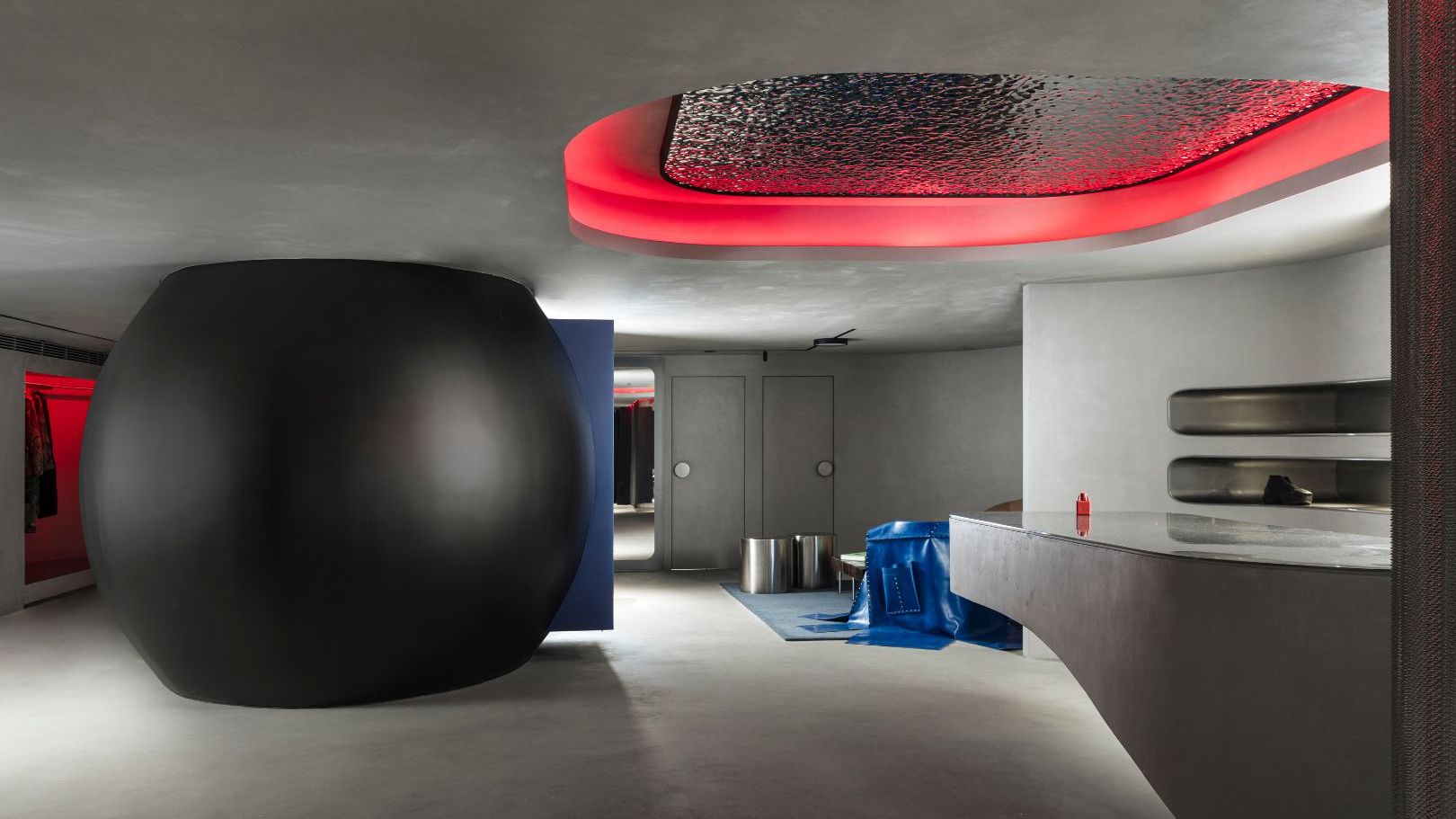In these three unique retail stores in India, that narrative gets flipped on its head. What do you notice when you walk into a store? Chances are, you zero in on products, while the design, configuration and experience fades into the background. In an age when India’s luxury retail markets are witnessing an unprecedented boom, standing out from the crowd has become ever important. At AD, we bring to you three stores that you will want to visit just for the evocative spatial journey they promise.
Aquant in Mahalaxmi, Mumbai
The last thing you would expect when you walk into a sanitary fittings showroom is a candy-coloured wonderland. Aquant’s new showroom in Mahalaxmi offers exactly that: an immersive, intuitive and intrigue-driven retail experience far from the norm. When asked about their key inspiration, lead designers Jasem Pirani and Huzefa Rangwala of Mumbai-based MuseLAB explain that they turned to “the essence of sorbet—its vibrant tartness and refreshing quality—resulting in a design language that evokes an icy, invigorating atmosphere with textures balancing between granular and velvet.”
Some characteristics of what used to be a formerly renowned rug atelier in Southern Mumbai were thoughtfully preserved, such as the 12-foot-high walls and the porous facade which opened to the street, while the others were entirely reimagined, such as the characteristic textured paint in a fresh mint hue. The design intent behind the spatial configuration was clear: one should be able to experience the entire volume from any point of the footprint. In the layout, intersecting circles create semi-open enclaves for different offerings, while never hindering the all-encompassing vistas of the entire showroom.
Unconventional in Alipore, Kolkata
“The client was one of our best friends and his mom, making the brief feel less like a formal design discussion and more like an ongoing conversation about fashion and its intersections with architecture,” reveal lead designers Kamal Periwal, Raj Periwal, and Srishti Periwal of Maheshwari and Associates. Global fashion aspirations meet an immersive, experiential typology open to all in this interactive multi-design retail space spread across 2,000 square feet. The curvilinear forms evoke fluid fabric drapes inspired by couture techniques such as pleating and folding—effectively blurring the lines between display fixtures and architectural elements (despite this being an interior project).
Against a pared-down palette, accent lighting, bold niches, and a strong interplay of light and shadow build contrasts and curiosity. “Every design element reinforces a duality—structured yet fluid, minimal yet expressive, revealing yet hidden,” elaborate the designers. The futuristic palette intrigues: the rawness of grey concrete, the reflectivity and tactility of metal, the sleek modernity of black PU set against vibrant accents such as bright blue niches, curated artworks, and sculptural furniture which break the monotony. The orchestrated use of colour and texture thus elevates both the sensory and functional experience here, renegotiating conventional spatial boundaries as befitting its name, Unconventional.
MANKASURATH in Calicut, Kerala
This is not a traditional fashion retail shop. For fashion designer Kamaruban Nusarath, this was to serve as a creative workspace dedicated to customisations, to emphasise artistry and exclusivity while eschewing the typical excessive display of outfits. As the first studio in Calicut dedicated to bespoke, personalised fashion, the design had to reflect the premium nature of the endeavor, for which she turned to the expertise of husband-and-architect Mansoor Anchukandan of DXD Architects. It was the meticulous craftsmanship of the caddisfly (an insect which uniquely builds protective cases from natural materials like sand, stone and plant fragments) and its effort to turn the ordinary to the extraordinary that serves as a guiding metaphor and inspiration for the custom couture approach this store embodies.
The ethos of customisation reflects in the design, which needed to incorporate the ability to be reconfigured to suit evolving needs. It began with an open-plan layout within this 775-square-foot space to ensure fluid movement between zones. Centrally placed, the design-and-creation zone is expansive and adaptable, with room for sketching, pattern-making and fabric selection. Around this, clever storage solutions maintain an organised workflow. The functional zones employ curved interior elements for soft, boundary-less transitions, with lightweight partitions facilitating flexibility.

